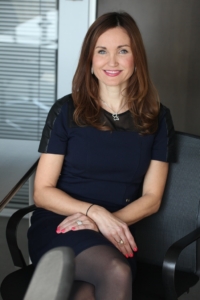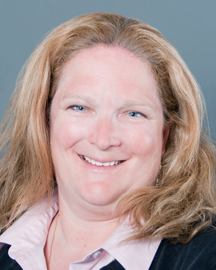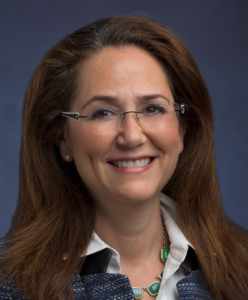When you live in a culture, rather than just visit it, you learn to adapt your own style to day-to-day norms in that new environment, says PwC’s Alica Pavukova. “You can bring that knowledge back home and utilize it in a broader way, which can help create better relationships and rapport if you learn how to cooperate and exist in different environments.”
A Career Built on International Travel
That philosophy has led Pavukova far in her diverse career with PwC. After earning her degree in mechanical engineering, traveling around US for a year, she attended a recruitment meeting at Coopers and Lybrand where she realized she really enjoyed audit work, so much so that she has been there for 26 years.
Her tenure there has allowed her to fulfill her passion for not only travel but really immersing herself in cultures with a wide variety of international experience. She began with a project in Russia; then went to the U.K. for six months and subsequently transferred to Melbourne for 18 months where she became a senior manager. In fact, she credits her mobility and experience in in different cultures as a fundamental reason for her success.
Seventeen years ago Pavukova returned to the Slovakia office, where she continued to help grow a profitable division – from six people to now more than 250 in audit and 550 overall — and now leads assurance and audit, as well as serving as the diversity and inclusion leader overseeing 28 countries in CEE.
That’s one of the achievements she is most proud of, expanding the diversity and inclusion footprint through the introduction of a an awards competition for business women in Slovakia, run in conjunction with a reputable economics magazine, that helps bring attention to successful women in local corporations. She is also proud that PwC in Slovakia has been instrumental in the Initiative of Diversity Charter, spearheaded by EU, where companies sign a diversity charter, acknowledging that they implement polices to promote diversity and inclusion.
Championing Women in the Workplace
As the leader of the audit practice, she plans to continue the success they’ve had so far developing future leaders by working with the pipeline of managers and developers to ensure there is equal access to promotions. The D&I element in CEE has been very successful thus far, currently 30% of the partners are women, one of the leading regions globally, although they realize there is always room for growth.
As a diversity leader, Pavukova sees unconscious bias as an ongoing issue. First, people need to identify their own biases, and then through accountability training, leaders can be given objectives to promote diversity and ensure the pipeline for partner and manager promotion takes into account all forms of diversity.
While she acknowledges there are some barriers for women, she says the greater question is about how you look at them: For example, PwC’s CEE levels are impressive with a 50 percent balance throughout the organization below partner level and 30 percent at partner level, which is better than most, yet still she sees the falloff as careers escalate.
Of course, some women decide after starting a family that they don’t want to progress in their career, but she knows there must be many who want to continue, but the work and family environment don’t support them in the way that’s most conducive, and then their mindset confirms it.
Pavukova believes that three components must mesh for it to work: First, employers need to create work environments where mothers are encouraged to work, through flexibility and maternity/paternity leaves; second, working parents must support each other and mutually participate in the activities of running the family; and finally, women themselves must not constantly create guilt but rather feel proud of their success. There’s a simple reason: She believes that when kids are grown, they will recognize their moms’ achievements.
She herself is an excellent example of realizing that work/life balance and serving as a role model. She and her husband and two sons love sports and travel and try to combine them; for example on a recent trip to Costa Rica where they hiked, surfed and more.












